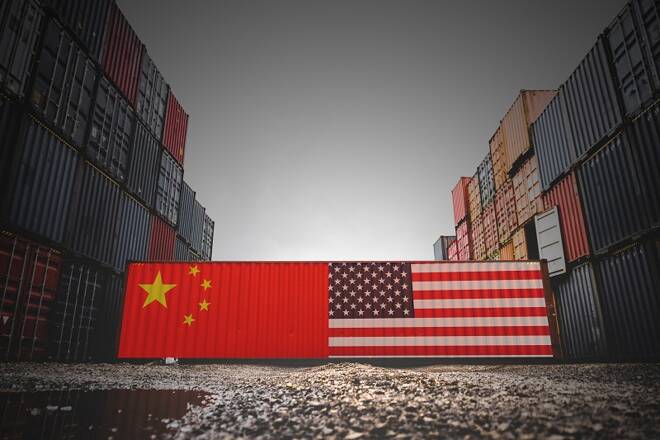Advertisement
Advertisement
The Trump Trade War – How to Widen a Trade Deficit, Lesson 1
By:
With the U.S trade deficit demonstrating the Trump's failed bid to narrow the deficit, a change of tact may be needed...
The Trade War
The U.S has been embroiled in a global trade war since the beginning of last year. The trade war started with Trump imposing tariffs on solar panels and washing machines. The tariffs were certainly not small at between 20% and 50%.
The U.S President followed this up with sweeping tariffs on steel and aluminum. Not quite as penalizing, the tariffs were set at just 25% and 10% respectively. Trump also threw in tariffs on newsprint, targeting Canada.
There have been a number of retaliatory responses to U.S tariffs. Mexico imposed 20-25% tariffs on U.S goods and Canada imposed less punitive 10-25% tariffs on U.S goods, including maple syrup and whiskey.
The retaliatory responses were minor until the U.S administration decided to up the ante on China. It was 25% tariffs on $50bn worth of Chinese goods, then tariffs on an additional $200bn worth of goods.
Fortunately for the global financial markets, the U.S President delayed the rollout of tariffs scheduled for 1st March.
China has not held back, targeting key sectors that impact the U.S administration, agriculture in particular.
So with all the tariffs rolled out and negotiations having been going on since the middle of last year, has there been any major shift in U.S trade terms?
The Numbers and the Irony
U.S trade data released on Wednesday didn’t do the U.S President or the Republicans any favors. The December trade deficit, not only widened but also hit levels not seen since 2008. Perhaps ironically, Trump managed to reverse the narrowing of the trade deficit during predecessor Obama’s 2-terms in the Oval Office. Obama had yet to take office when the trade deficit had reached such levels.
The U.S trade deficit widened from $50.30bn to $59.80bn in December. Of even greater significance was the $891bn trade deficit for 2018, the largest deficit on record.
In an almost bizarre twist of fate, China’s economic slowdown led to a slide in demand for U.S goods. In stark contrast, a stronger U.S Dollar and robust labor market conditions supported the demand for foreign goods. The U.S deficit with China has certainly not narrowed and is unlikely to do so anytime soon unless the U.S President bans the import of Chinese goods altogether. Quite a tall order for a nation of hungry consumers favoring cheaper foreign goods over U.S manufactured goods.
As the U.S administration enters initial trade talks with the EU, the latest trade figures will give both sides of the table food for thought. As far as the U.S administration is concerned, the only effect they have had is in riling farmers, a lifeline to the U.S President’s very existence in office.
Perhaps there will be a realization that U.S demand for foreign goods is unlikely to wane. Rolling out tariffs just increases the price of goods and has no impact on actual trade balances. U.S consumers merely paid higher prices for foreign goods, they certainly did not look to even more expensive U.S goods as an alternative.
Looking Ahead
There’s now a vested interest in the U.S administration to wrap up negotiations with China. The numbers are certainly a blow and the timing couldn’t have been worse. For the EU, the timing couldn’t have been better. The latest numbers reveal that the consumer is more than able to absorb the higher costs. A stronger Dollar partially offset the uptick in prices and will likely continue to do so.
The U.S economy has slowed but is certainly faring better than many of its trading partners. That can only suggest a further widening in the U.S trade deficit. Globalization is working at its best. Making America great again will have to come with foreign goods in the picture.
The U.S President may be better served taking a greater interest in demand for U.S goods overseas. Corporate America would see that jump in demand that Trump has been in search of. The added bonus would be a narrowing of the trade deficit and a further boost to the U.S equity markets and ultimately the U.S economy.
A number of news portals have reported that Trump will use the U.S equity market and the U.S economy in his bid for a second term. While closing out trade negotiations with China is a must, looking at ways to boost economic growth, not just in the U.S, but globally would also be a plus. After all, a full circle in the U.S equity markets and a more material slowdown in the U.S economy could end any hopes of a 2020 victory.
About the Author
Bob Masonauthor
With over 20 years of experience in the finance industry, Bob has been managing regional teams across Europe and Asia and focusing on analytics across both corporate and financial institutions. Currently he is covering developments relating to the financial markets, including currencies, commodities, alternative asset classes, and global equities.
Latest news and analysis
Advertisement
